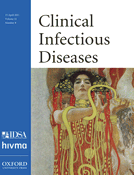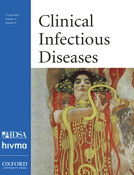
Cover image

On the cover: “Hygieia,” Oil on canvas, 1900, detail from “Medicine,” a ceiling panel for the hall of the University of Vienna by Gustav Klimt (Austrian, 1862-1918). Work destroyed by fire 1945. Art Resource. New York. Reproduced with permission.
Klimt's image of Hygieia, the Greek goddess of good health, follows the classical standard of representing her as a woman holding the serpent of wisdom in one hand with a bowl containing a medicinal potion in the other. A serpent also appears on the caduceus, the staff of Aesculapius recognized as the symbol of medicine, while the bowl of Hygieia is the symbol of pharmacy. In the Greek pantheon, Hygieia, from whom the word hygiene was derived, was the daughter of the medicine-god Aesculapius; the Romans continued to honor her under the name of Salus.
Klimt was an Austrian Symbolist painter, and a leader of the Vienna Secession, an artistic movement founded in 1897 by those who protested what they regarded to be the conservative views of the Vienna Ku´nstlerhaus. (Mary and Michael Grizzard, Cover Art Editors)
Volume 52, Issue 8, 15 April 2011
15 April News
News
In the Literature
Antibiotic Resistance and Bacterial Altruism
ARTICLES AND COMMENTARIES
Vancomycin: We Can't Get There From Here
Our findings indicate that vancomycin may not be useful for treating MRSA infections with MICs >1 mg/L. Aggressive vancomycin dosing, producing an adequate drug exposure, is also associated with a high risk of nephrotoxicity, especially for ICU patients.
Impact of Vancomycin Exposure on Outcomes in Patients With Methicillin-Resistant Staphylococcus aureus Bacteremia: Support for Consensus Guidelines Suggested Targets
We evaluated 320 patients receiving vancomycin therapy for complicated MRSA bacteremia. Vancomycin trough concentrations, <15 mg/L, infective endocarditis, and a vancomycin MIC>1 mg/L by Etest predicted failure. Optimization of vancomycin therapy is warranted to improve patient outcomes.
Compartmentalization of Acyclovir-Resistant Varicella Zoster Virus: Implications for Sampling in Molecular Diagnostics
Mutations in Varicella zoster virus (VZV) thymidine kinase can cause resistance of VZV to Acyclovir. In stem cell transplant recipients with Acyclovir-resistant VZV disease, we demonstrate temporal as well as spatial compartmentalization of such mutations with important implications for sampling.
Investigation of a Group A Streptococcal Outbreak Among Residents of a Long-term Acute Care Hospital
In our investigation of a group A Streptococcus outbreak in a long-term acute care hospital, the single risk factor remaining significantly associated with GAS infection on multivariable analysis was having a roommate infected or colonized with GAS.
Lethal Streptococcal Outbreak in a Long-term Acute Care Hospital: What Went Wrong and Why?
Predicting High Vancomycin Minimum Inhibitory Concentration in Methicillin-Resistant Staphylococcus aureus Bloodstream Infections
MSRA isolates with high vancomycin MIC have been associated with treatment failure. Predicting the likelihood of high vancomycin MIC may be useful for clinical decision making. We present a simple tool to help predict vancomycin MIC in MRSA bacteremia.
Wide Prevalence of Heterosubtypic Broadly Neutralizing Human Anti–Influenza A Antibodies
Sera from H5N1 vaccinees and IVIG were analyzed for cross-reactive Abs against HA of influenza A viruses. Data quantitatively show the presence of two populations of heterosubtypic neutralizing Abs against either Group 1 only or Group 1+2 viruses.
Prospecting the Influenza Hemagglutinin to Develop Universal Vaccines
Chronic Q Fever: Different Serological Results in 3 Countries—Results of a Follow-up Study 6 Years After a Point Source Outbreak
Q fever serological results vary between testing centers with major implications for the diagnosis and treatment of Q fever. Clinicians need to be aware of the discrepancies. An international standard of Q fever serological investigation should be developed.
BRIEF REPORTS
Deep Brain Stimulation Hardware-Related Infections: A Report of 12 Cases and Review of the Literature
Enzyme-Linked Immunosorbent Assay for the Diagnosis of Melioidosis: Better Than We Thought
PHOTO QUIZ
A Patient With AIDS With Fungating Lesions of the Face and Scalp
INVITED ARTICLES
clinical practice
Clinical Application and Limitations of Interferon-γ Release Assays for the Diagnosis of Latent Tuberculosis Infection
Healthcare Epidemiology
Biofilm Elimination on Intravascular Catheters: Important Considerations for the Infectious Disease Practitioner
HIV/AIDS
The Effect of Expanded Antiretroviral Treatment Strategies on the HIV Epidemic Among Men Who Have Sex With Men in San Francisco
Modeling of expanding antiretroviral treatment to all HIV-infected adults already in care in San Francisco predicts reductions in new HIV infections at 5 years of 59% among men who have sex with men (MSM). Addition of annual HIV testing for MSM to universal treatment decreases new infections by 76%.
Antiretroviral Therapy as Prevention: Linking the Mainframe to Main Street
HIV-1 Drug Resistance Mutations Among Antiretroviral-Naive HIV-1–Infected Patients in Asia: Results From the TREAT Asia Studies to Evaluate Resistance-Monitoring Study
Of 682 antiretroviral-naïve patients initiating antiretroviral therapy in a prospective, multicenter HIV-1 drug resistance monitoring study involving 8 sites in Hong Kong, Malaysia, and Thailand, the prevalence of patients with ≥1 drug resistance mutation(s) was 13.8%. Primary HIV drug resistance is emerging after rapid scaling-up of antiretroviral therapy in Asia.
Assessments of HIV Drug Resistance Mutations in Resource-Limited Settings
Increased Rates of Bone Fracture Among HIV-Infected Persons in the HIV Outpatient Study (HOPS) Compared With the US General Population, 2000–2006
Age-adjusted fracture rates among HIV patients in the HOPS were higher than in the general population from 2000 to 2006. Clinicians should regularly assess HIV+ patients for fracture risk, especially those with low nadir CD4 cell count or other established risk factors.
Initiation of Antiretroviral Treatment in Women After Delivery Can Induce Multiclass Drug Resistance in Breastfeeding HIV-Infected Infants
HIV-infected breastfeeding infants acquired multiclass drug resistance (MCR) after their mothers started highly active antiretroviral therapy (HAART). MCR was more frequent in infants whose mothers started HAART by 6 months postpartum or were exclusively breastfeeding when they reported HAART use.



